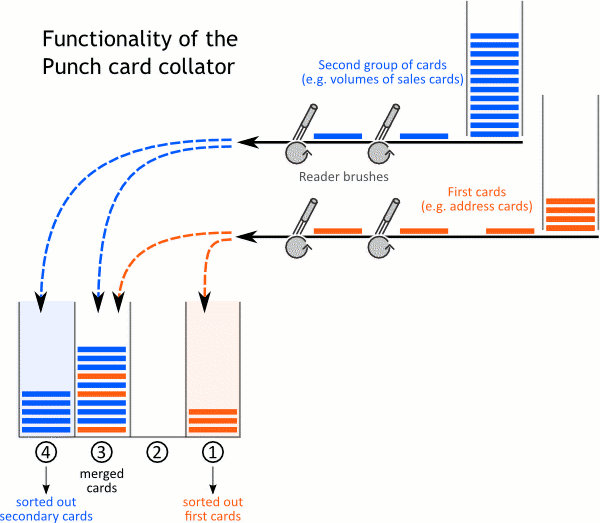The function of the punch card collator
What does a punch card collator do? Operations were mostly divided into two categories: Non-changing numbers (e.g. adresses are subject to few changes) and changing numbers (e.g. sales volume are constantly changing).
If we had a list of customer names to be sorted, we would first give each customer a 5 digit customer number. We can then sort this list in numerical order or sort by their names.

In our simple example, we have only two types of cards: Address cards and sales cards. The address input station/hoppers are filled in ascending customer numbers. Likewise the sales cards are in ascending order in the sales input station/hopper. Now the collator merges these two stacks to one stack where the sales cards are associated with every matching address/customer number. If the address/customer number card which is associated to a sales number is missing (or the other way around), the collator will separate the card in another pocket.
The ability to sort the 2 independent decks of input cards into these 3 categories was the primary task of the collator. Therefore, the machine requires 2 input hoppers and at least 4 output pockets. In addition there were many other sorting variations and possibilites for this machine.